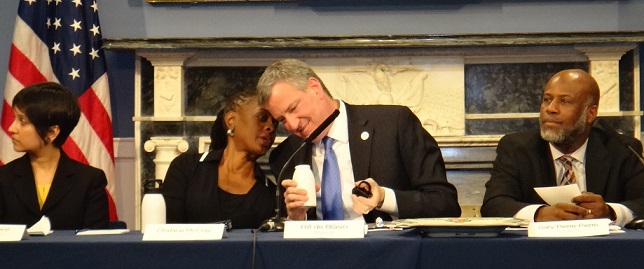Change at the top did not include House as Nancy Pelosi keeps minority leadership
By Lourdes Astraquillo Ongkeko, Ph.D.
Brief out-of-town schedules after the November 8th elections brought out many a personal
view: “We woke up feeling like strangers in a foreign land.”
But the very recent choice of Nancy Pelosi, who, at 76, was voted to lead the Democratic members of the House does erase some fears. Instead of the anticipated weakening of the party, the congress person from the City by the Bay managed to expand her leadership which included more seats at the party’s table for younger members and those from states the president-elect marked as “won.”
As soon as she was elected, Pelosi, the first woman Speaker of the House of Representatives said: “We will lead the resistance to any effort that would shred our social fabric on our Constitution.”
Myriad best wishes fell on Pelosi as soon as the outcome of the closed-door vote was known. She fended off a challenge to her lengthy reign from Representative Tim Ryan from Ohio, who had argued Pelosi was unpopular with working-class sector and should be giving way to younger leaders. The votes for Pelosi were 134 versus Ryan’s 63. She won 60 percent of the vote; it was clear she had the support of two-thirds of the caucus.
Pelosi’s win had a hidden victory. One that illustrates while there is a growing appetite for major changes in the party’s leadership structure and messaging tactics, it’s not that vigorous enough to loosen her grip on a liberal-heavy group that’s rarely challenged her authority.
The election of the California leader showed how Democratic representatives opted strongly
to keep her in the leadership position. The Pelosi triumph was illustrated by assists she received from Representatives Steny Hoyer of Maryland and Jim Clyburn of South Carolina, in-charge of efforts to improve the party’s future heading into the 2018 mid-term elections.
There was a formidable message built into Pelosi’s supporters: “That a majority of Democrats consider the long experience of her current leadership,” as echoed by California Representative, Adam Schiff who nominated her.
Too, Pelosi’s had enjoyed a celebrated reputation for ‘uniting the caucus’ — her indispensable assets in future legislative fights as her colleagues went warmly for her nomination and her ultimate election.
She pledged to put the fight behind her in an effort to unify the Democrats for defending Obama’s legislative legacy from the incoming Trump administration and the Republicans’ efforts aimed at keeping control of both chambers in 2018.’
The election of Pelosi is to be judged by achievement, not by gender. After all, when Pelosi was elected to the House leadership 15 years ago, that period under her watch in 2010 was during the first Obama term in office.
When interviewed on so many occasions, Nancy Pelosi would quickly talk about how she is the mother of five and a grandmother. She has been identified as indefatigable. She is optimistic in declaring the immediate future as her ‘after-the-vote-proclamation’ indicated: her hope as she returns to her formal historical position where she seeks expansion of her Democratic leadership team, more seats for younger members and those from states Trump had won.

















